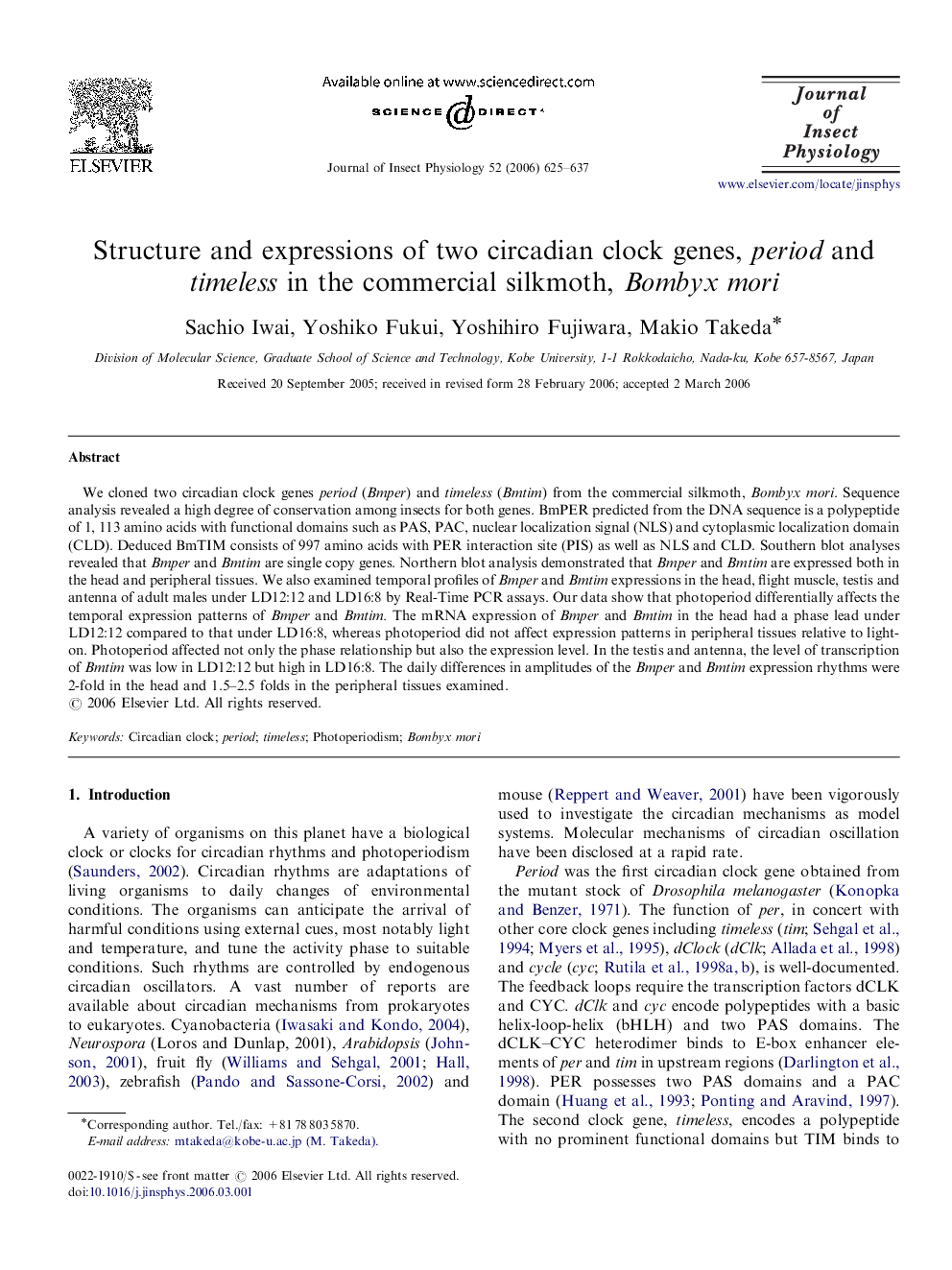| Article ID | Journal | Published Year | Pages | File Type |
|---|---|---|---|---|
| 2841586 | Journal of Insect Physiology | 2006 | 13 Pages |
We cloned two circadian clock genes period (Bmper) and timeless (Bmtim) from the commercial silkmoth, Bombyx mori. Sequence analysis revealed a high degree of conservation among insects for both genes. BmPER predicted from the DNA sequence is a polypeptide of 1, 113 amino acids with functional domains such as PAS, PAC, nuclear localization signal (NLS) and cytoplasmic localization domain (CLD). Deduced BmTIM consists of 997 amino acids with PER interaction site (PIS) as well as NLS and CLD. Southern blot analyses revealed that Bmper and Bmtim are single copy genes. Northern blot analysis demonstrated that Bmper and Bmtim are expressed both in the head and peripheral tissues. We also examined temporal profiles of Bmper and Bmtim expressions in the head, flight muscle, testis and antenna of adult males under LD12:12 and LD16:8 by Real-Time PCR assays. Our data show that photoperiod differentially affects the temporal expression patterns of Bmper and Bmtim. The mRNA expression of Bmper and Bmtim in the head had a phase lead under LD12:12 compared to that under LD16:8, whereas photoperiod did not affect expression patterns in peripheral tissues relative to light-on. Photoperiod affected not only the phase relationship but also the expression level. In the testis and antenna, the level of transcription of Bmtim was low in LD12:12 but high in LD16:8. The daily differences in amplitudes of the Bmper and Bmtim expression rhythms were 2-fold in the head and 1.5–2.5 folds in the peripheral tissues examined.
